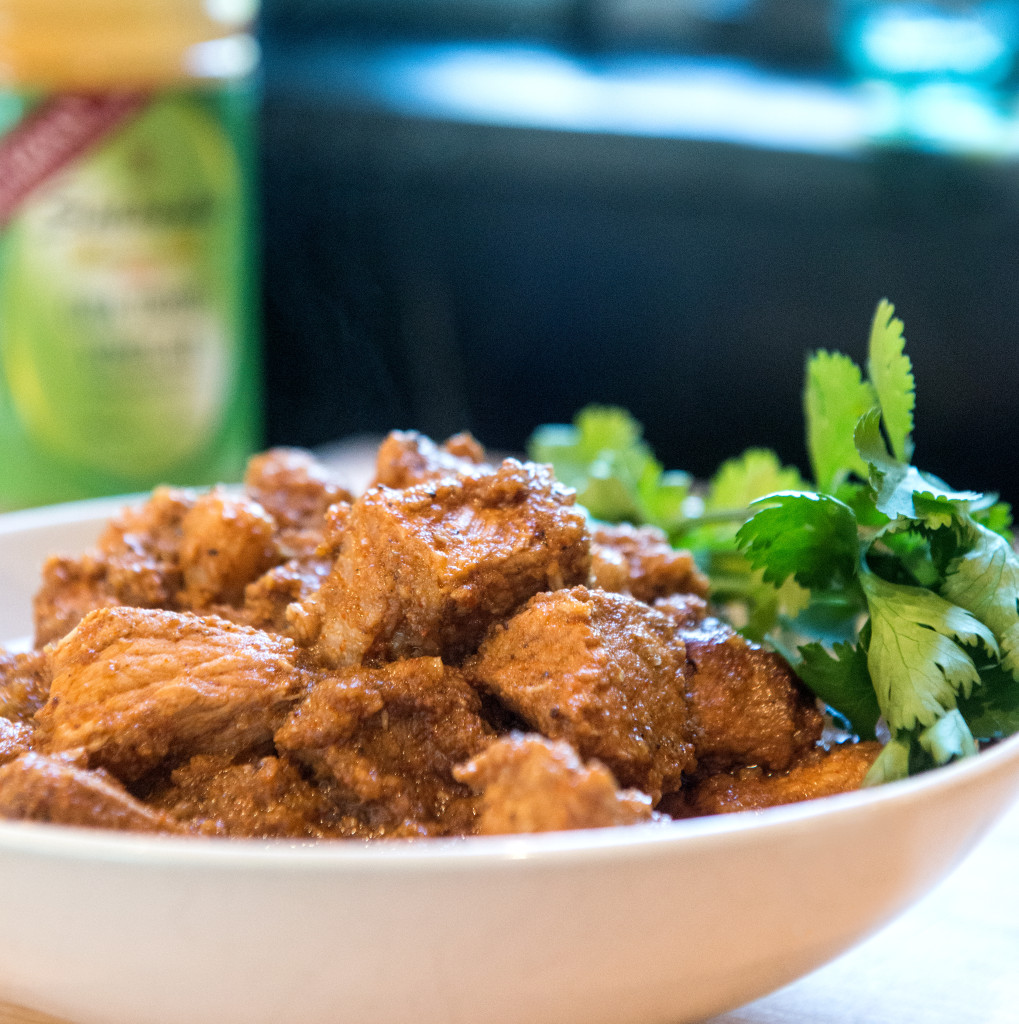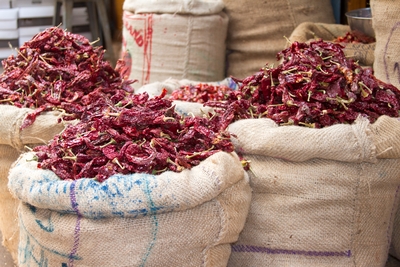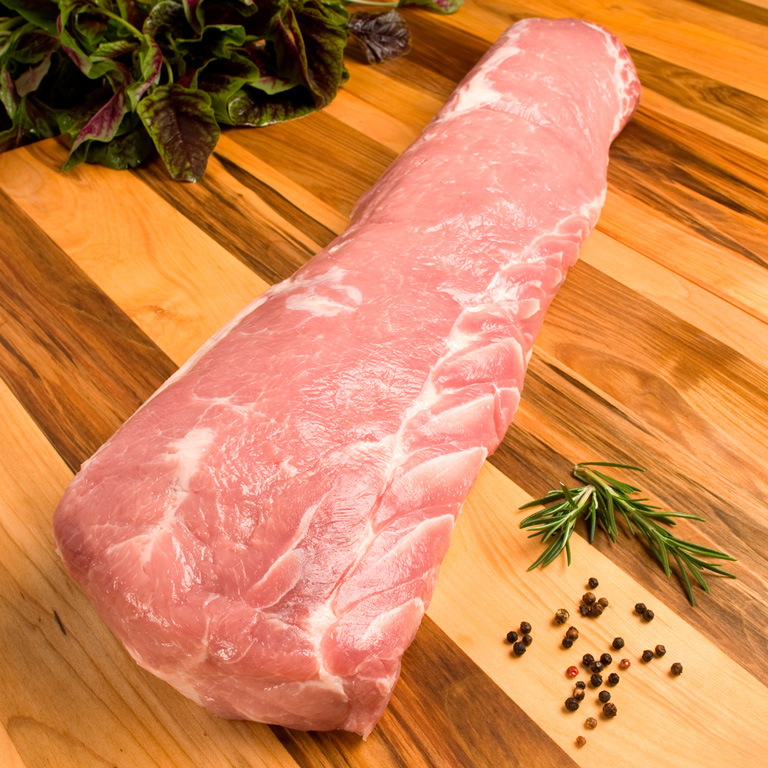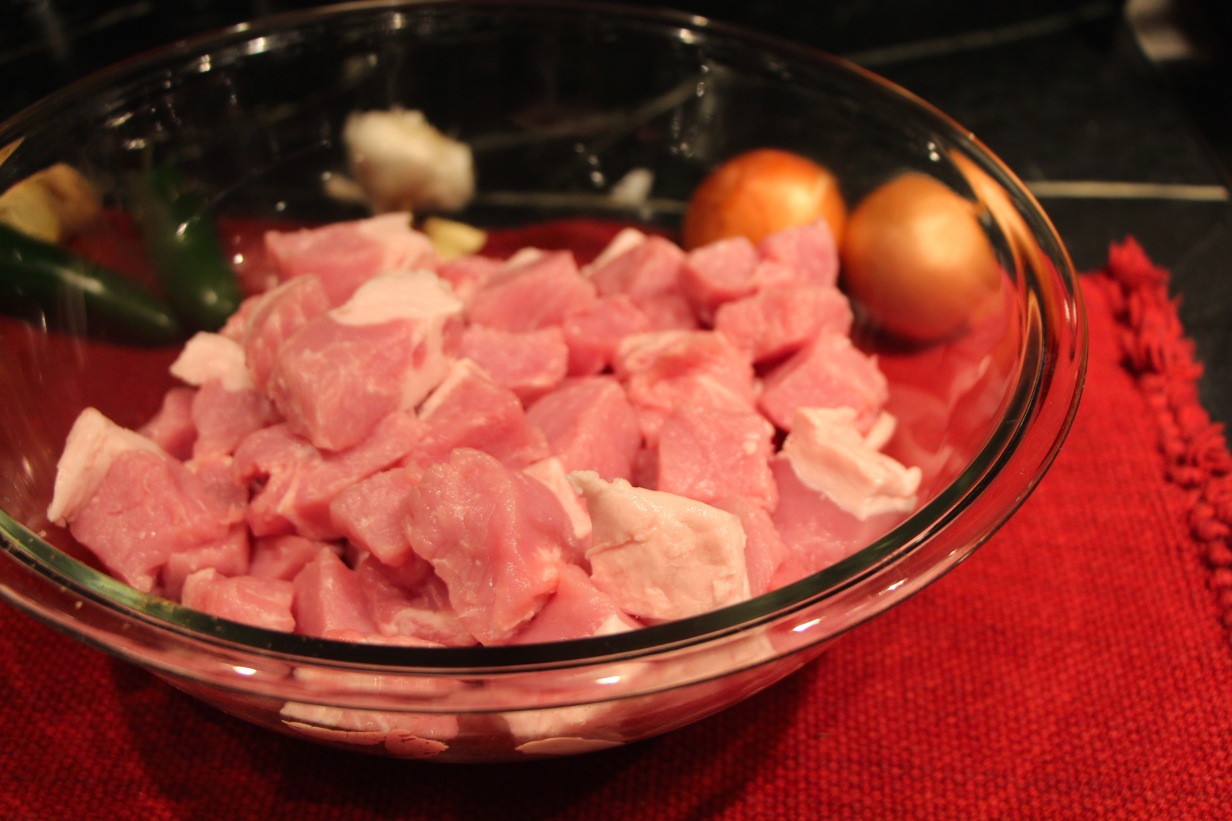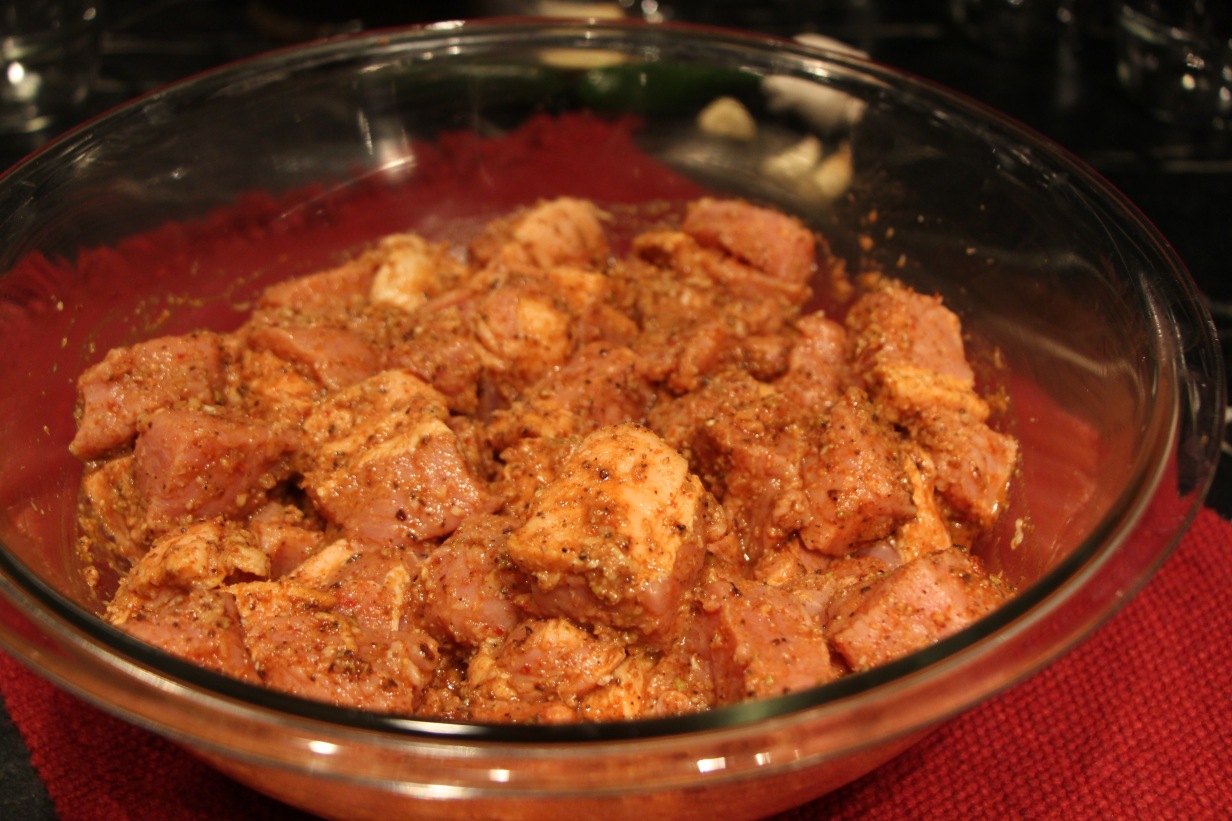I was only 6 when I tried my first pork vindaloo. I will never forget that first bite: the tart but tender pork made my mouth pucker as my eyes widened in pleasant surprise. It was truly the first culinary roller coaster ride in my mouth. I had to have more!
As a little girl, I thought of vindaloo as a grown-up dish. The flavors were intense. I never questioned what went in it to make it so delicious. I just ate multiple helpings of it as my mother recalls. But over the years, I’ve developed a curiosity about its origins and what gave this signature Indo-Portuguese dish a special spot in my mother’s culinary repertoire.
A quick history lesson would note that the adventurous and ambitious Portuguese attempted multiple voyages to India and finally sailed into Goa, a coastal state located on the Western Coast of India, in the late 1400s and colonized it until 1975. Spreading Christianity, “combating Islam,” and strengthening their Portuguese-Asian spice empire were the primary goals of the Portuguese. Since the 12th century AD the Arabs had controlled all the spice trade routes into India. Eventually, after over a decade of battles the Portuguese finally overthrew the Arabs and took over the spice trade routes through Cochin and Goa. General Afonso De Albuquerque encouraged the Portuguese soldiers to marry the local women and thereby ensured Portuguese presence among the locals. While the Portuguese enjoyed a monopoly over spice routes they also introduced the fiery red chili pepper.
The Goa vindaloo was derived from the Portuguese dish, Carne de Vinha D’alhos: a meat (carne) dish that was marinated in wine (vinha) and garlic. Since wine was not commonplace in Goa, the locals tapped into the abundant coconut trees that dotted the coastline and used the coconut tree sap to make palm vinegar. The local vinegar, commonly known as coconut toddy, replaced the wine in the marinade. Thus, the Goa vindaloo took on a life of its own and evolved into a fiery-red, spicy, vinegar-based stewed pork dish. The dish became uniquely Goan and no longer authentically Portuguese.
I have tried the spicier versions of vindaloo, which are so high on the heat index that they fail to deliver the layered complexities of this Goan dish. But then there is vindaloo that leave you aching for just another bite; vindaloo that doesn’t sear your tongue upon impact, but is slow-cooked and seasoned to perfection– leaving you wanting more. With an artful vindaloo you want to aim for tangy, tart, sweet, spicy, melt-in-your mouth pork with a fatty exterior and a lean interior.
I was fortunate to have a tried-but-true recipe handed down to me by my dear mother, who has spent much of her adult life trying to master this nuanced dish. My mother’s eyes always glistened with nostalgia as she shared stories about her childhood summers in the village of Candolim, Goa. Every pig harvest was crucial for survival in this small village. The men would slaughter and carefully butcher the pig, while the women would take care of the cleaning, marinating, curing and pickling process. Everyone in the family would share a part in the harvest, the cooking and of course the feasting. Refrigeration was not an option and so locals had to pickle the meat in barrels with chili, garlic and palm vinegar. Another option was to cure the harvested and pickled meat in the intense summer heat and then resurrect the sun-dried meat with an addition of chilies and vinegar or coconut milk.
Vindaloo was an important part of the Goan family unit. It was proudly served at every big Catholic holiday as in Easter, Christmas Day and special family occasions. The flavor profiles in this dish called for a sophisticated palette.
This was my first attempt at a Goa vindaloo. It had to be authentic in every way possible.
I was determined to source the Goa coconut vinegar online, and set my sights on the finest pork on the market: Berkshire pork from D’Artagnan, sourced from a co-operative of sustainable pig farmers at the base of the Ozark mountains. I took one glance at this tender, prime pork, intricately marbled with just the right layers of fat and my face lit up in delight.
For the seasoning I imported a bag of whole dried Kashmiri chilies from an online vendor. You can also purchase Kashmiri chili powder. I chose the whole chilies and soaked them for a couple of hours in the vinegar until every chili slowly re-hydrated itself — plump and bursting with the unctuous vinegar flavor. It is important to note the value in sourcing the right chilies – the Kashmiri chili is known for its signature fire-engine red color, a signature pepper of choice for Goa vindaloo. If you cannot source these chilies you can always substitute with a red chili powder and add paprika to add the red color. I ground the drunken chilies and the cloves of fresh garlic into a wet paste and rubbed the pungent potion into the two-inch cubes of pork. The piercing smell of the coconut vinegar and garlic took me right back to my mother’s kitchen.
I took out my spice grinder and carefully measured the whole spices, as per the recipe. My mother always did her best to source whole spices, and suggested that I grind them right before adding them to the pork. Her sage advice was to lightly toast them in a pan before grinding, as her recipe below explains. I knew the complex flavors of the toasted cumin, cloves, cinnamon, cardamom and peppercorns would balance out the robust vinegar, chili, garlic and onion base.
After a good forty-five minutes into the cooking, I weakened at the knees and gave in: I opened my Creuset and shamelessly stole a good chunk of the melt-in-my mouth pork – the luscious gravy dripping down my chin and apron. In that private moment, time stood still, and I felt like I was 6 all over again, longing for one more bite. Only this time around I was at my own kitchen counter with my daughter asking for her first bite of her mommy’s special pork vindaloo.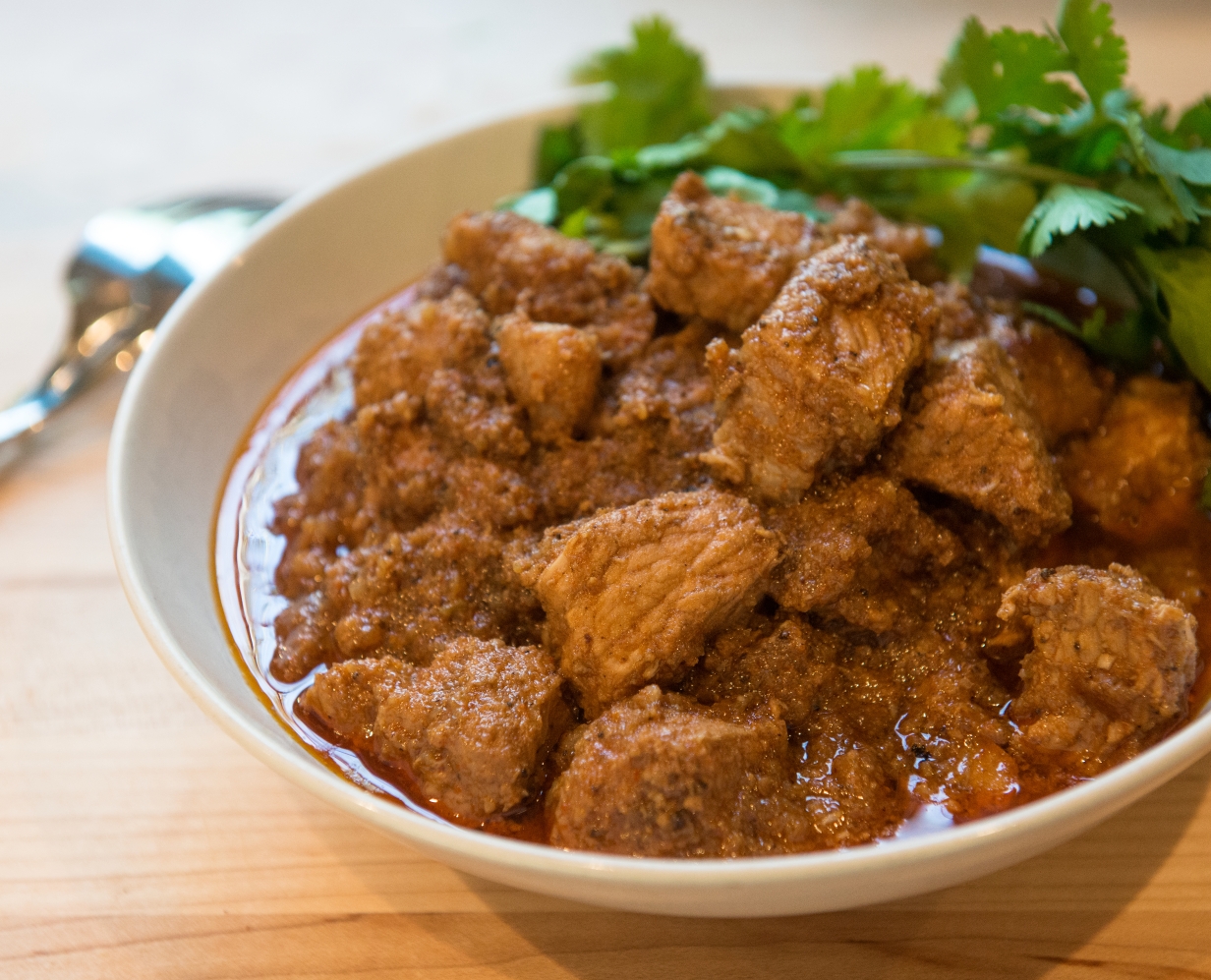
Ingredients:
3 pounds of D’Artagnan Berkshire Pork Boneless Loin
1/2 tablespoon of fine salt
12 whole Kashmiri dry chilies
1/2 cup palm vinegar or Goa coconut toddy
2 teaspoons coriander seeds.
1 teaspoon cumin seeds
1/2 teaspoon of peppercorns
1/2 teaspoon of cloves
2 one inch pieces of cinnamon sticks
10 pods of green cardamom
1/2 cup of vegetable oil
1 medium sized yellow onion – roughly chopped
1 medium-sized yellow onion- sliced finely
1 inch knob of ginger sliced finely
3 flakes of garlic diced
2 green chilies – slit length-wise into 6 pieces
2 cups of boiling water
Preparation:
1. Cut Berkshire pork into 2 inch pieces, salt, and set aside in a big glass bowl in the fridge, covered.
2. Soak 12 whole Kashmiri dry chilies in a 1/2 cup palm vinegar or Goa coconut toddy for two hours until re-hydrated.
3. Toast the following spices in a pan on low heat for 1 minute. Allow to cool.
2 teaspoons coriander seeds
1 teaspoon cumin seeds
1/2 teaspoon of peppercorns
1/2 teaspoon of cloves
2 one inch pieces of cinnamon sticks
10 pods of green cardamom
4. In a food processor grind 1 yellow onion ( roughly chopped) and 5 flakes of garlic with the soaked Kashmiri chilies and the toasted spices into a thick wet paste or marinade.
5. Pull out the cubed pork from the fridge, rub the marinade into the pork gently, cover with plastic wrap and set aside in the fridge overnight. The next day, take the pork out of the fridge and allow it to come to room temperature.
6. In the meantime, make the gravy: Put 1/2 cup of vegetable oil in a heavy bottom pot, medium heat. Add 1 medium-sized finely-sliced yellow onion, sliced ginger, 3 flakes of diced garlic, 2 green chilies. Fry on medium-high heat, until soft, with lid on. Stir occasionally, don’t let this burn.
7. Add the marinated pork pieces with left over marinade, fry well for 10 minutes, turning often in oil.
8. Add 2 cups of boiling water and stir. Cover and cook on a slow to medium heat without burning at the bottom. Stir every 15 minutes until the meat is tender and skin of pork is soft and well done.
I dare you to not steal a piece of the tangy pork. Allow the pork to cool and then refrigerate. Heat again and add 1/2 cup of chopped cilantro.
Enjoy with steamed white rice, crusty bread, or in Goa we eat it with rice sannas (steamed rice dumplings.)
This dish always tastes better the next day, so make it ahead of time and then reheat before company arrives.
